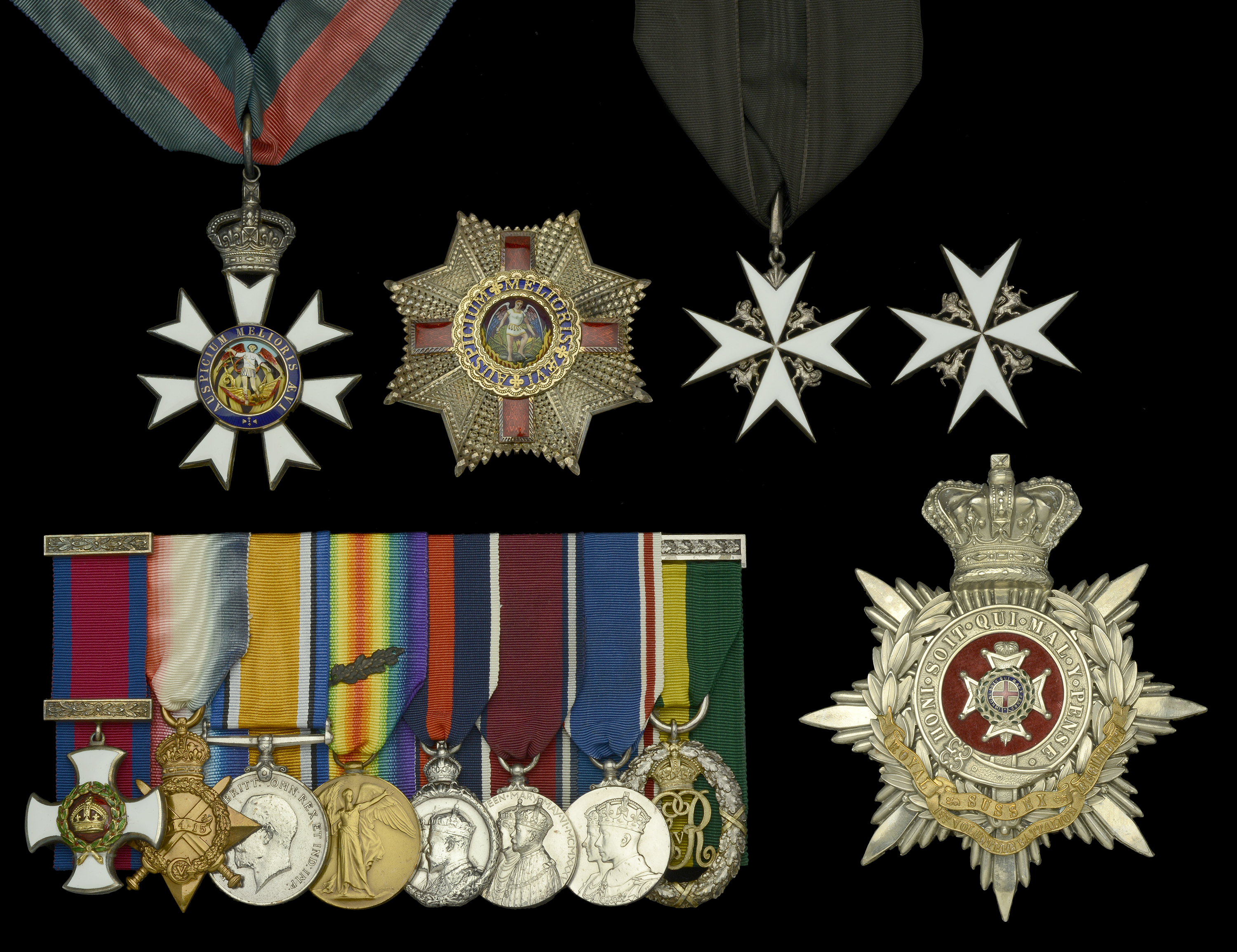An inter-War K.C.M.G., Great War D.S.O. group of ten awarded to Colonel Sir William R. Campion, Sussex Regiment, who served as Member of Parliament for Mid Sussex 1910-24, and as Governor of Western Australia 1924-31 The Most Distinguished Order of St. Michael and St. George, K.C.M.G. Knight Commander’s set of insignia, comprising neck badge, silver-gilt and enamel; and breast Star, silver, silver-gilt, gold appliqué, and enamel, with gold retaining pin; The Order of St. John of Jerusalem, Knight of Grace’s set of insignia, comprising neck badge, silver and enamel, with heraldic beasts in angles; and breast Star, silver and enamel, with heraldic beasts in angles; Distinguished Service Order, G.V.R., silver-gilt and enamel, with integral top riband bar; 1914-15 Star (Lt. Col. W. R. Campion. R. Suss. R.); British War and Victory Medals, with copy M.I.D. oak leaves (Lt. Col. W. R. Campion.); Coronation 1902, silver, unnamed as issued; Jubilee 1935, unnamed as issued; Coronation 1937, unnamed as issued; Territorial Decoration, G.V.R., hallmarks for London 1919, with integral top brooch bar, mounted court-style for display, minor pitting to BWM, lacquered, generally good very fine and better (12) £4,000-£5,000 --- K.C.M.G. London Gazette 23 July 1924. D.S.O. London Gazette 1 January 1918. Knight of Grace, Order of St. John London Gazette 22 June 1928. Sir William Robert Campion was born on 3 July 1870, the eldest son of Colonel W. H. Campion, C.B., and the maternal grandson of Viscount Hampden, and was educated at Eton and New College, Oxford. He was commissioned Second Lieutenant in the 2nd Volunteer Battalion, Sussex Regiment, on 24 November 1888, and was promoted Lieutenant on 27 September 1890, and Captain on 19 December 1894. Re-numbered the 4th Battalion, he was promoted Major on 23 April 1915, and served as Colonel Commanding the 4th Battalion with the rank of Temporary Lieutenant-Colonel during the Great War in Gallipoli from 17 July 1915. Confirmed in that rank on 4 September 1915, he was invalided home in late 1915, before going to France in 1916 in command of the 15th Battalion, Royal Fusiliers, before transferring to the 6th Battalion, Bedfordshire Regiment. For his services during the Great War he was three times Mentioned in Despatches (London Gazettes 28 January 1916, 18 December 1917, and 9 July 1919), and was appointed a Companion of the Distinguished Service Order. Following the cessation of hostilities he returned to the Royal Sussex Regiment for service with the army of occupation in Germany. Campion served as Conservative Member of Parliament for Mid-Sussex from 1910 to 1924 (with the constituency having various different names during the period), and in that latter year was appointed Governor of Western Australia (together with the accompanying knighthood), serving until his retirement in 1931, a period which coincided with the State’s centennial celebrations in 1929. Retiring to Sussex, Campion served as a Deputy Lieutenant for Sussex, and subsequently took up the Directorship of a number of Australian gold mining companies; as a member of the Empire Settlement Committee he also spoke frequently in favour of organised migration to Australia. He died at Hassocks, Sussex on 2 January 1951. Sold with a Royal Sussex Regiment 1st Volunteer Battalion helmet badge, some damage to reverse lugs; and copied research, much of it relating to his time as Governor of Western Australia, including various photographic images of the recipient.





